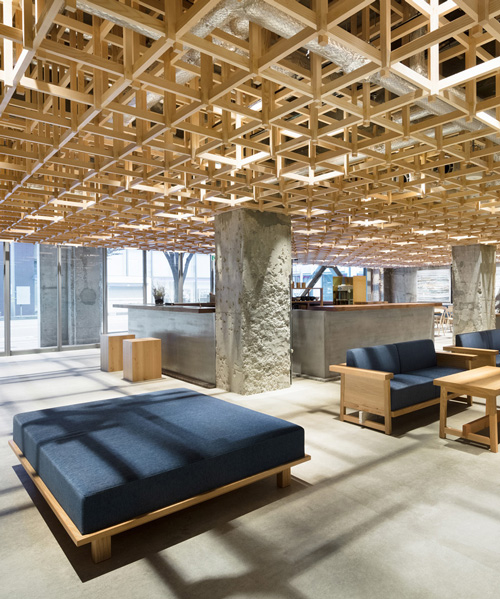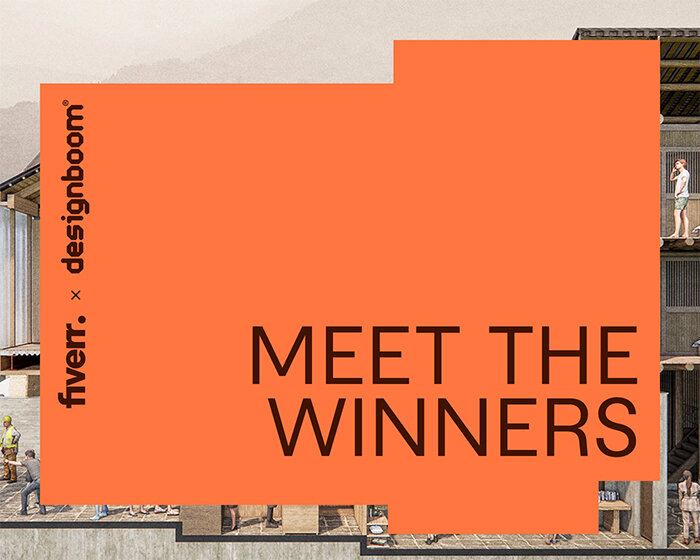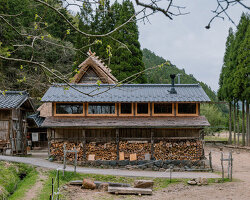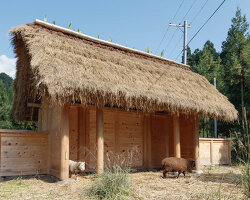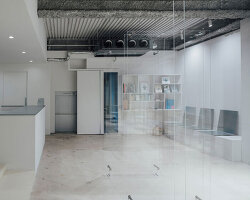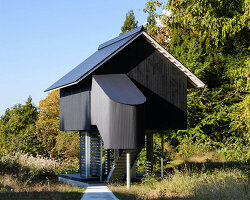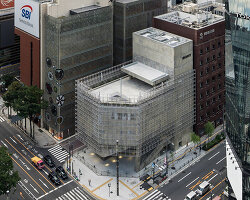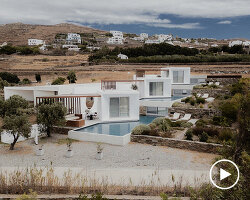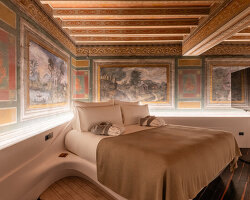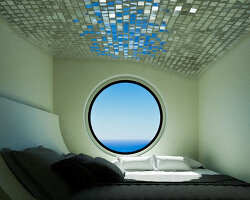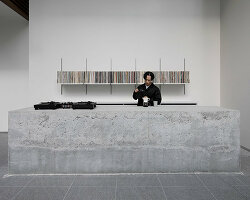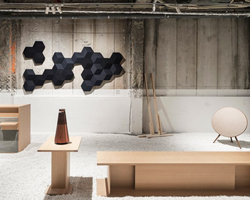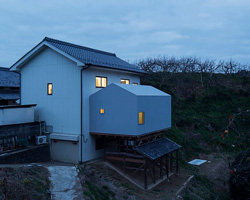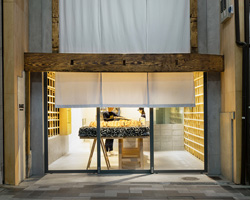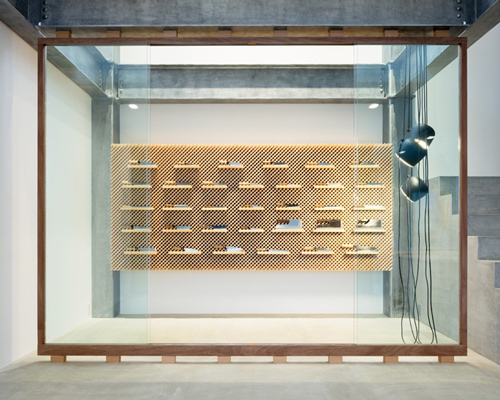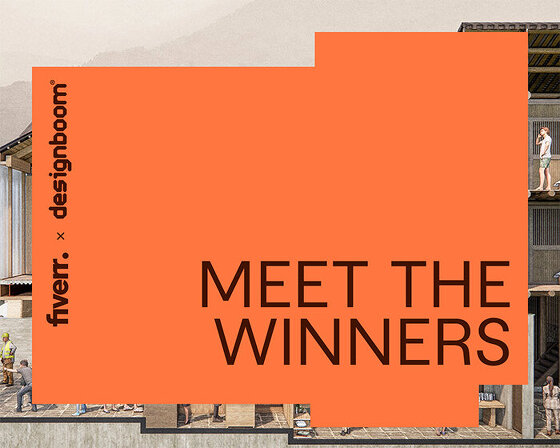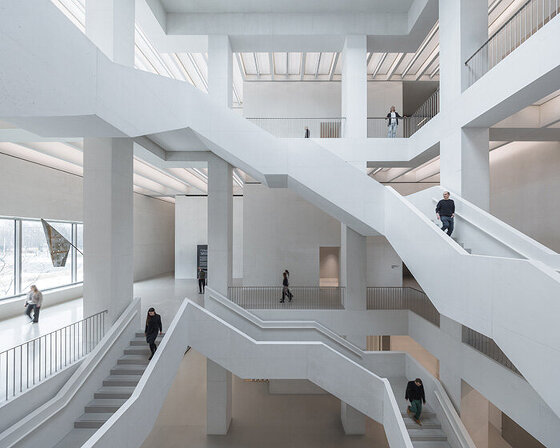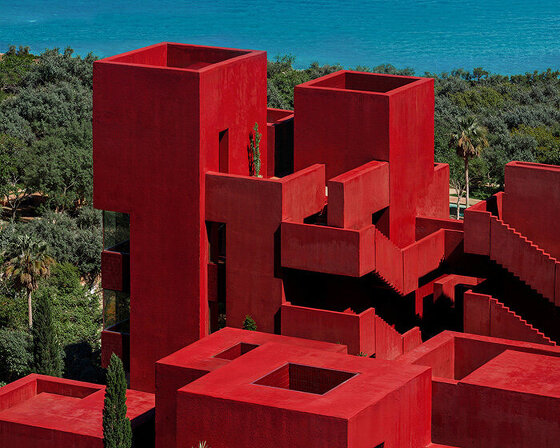located in kanazawa, an old japanese castle town by the sea, famous for its tea-house districts and traditional crafts, yusuke seki‘s kumu hotel draws from the urban context to introduce foreign and domestic guests to the local community and its history. the hotel is named after its concept – kumu – a japanese verb which, depending on the context, can have many nuances, such as ‘to join’, ‘to draw out’, or ‘to pour’. this concept is expressed in various ways throughout the project, starting with traditional japanese joinery that is used in the timber grid of the lobby, which also serves to support modular wall panels for subdividing the space.
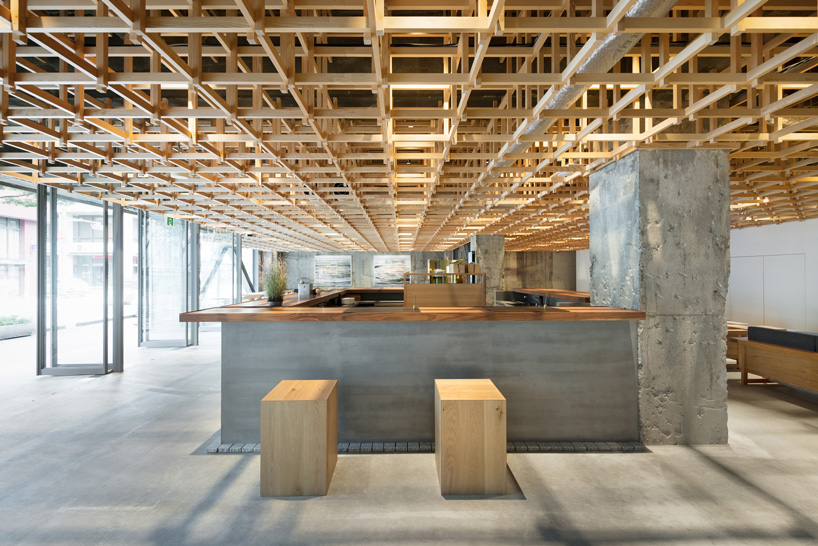 all images by takumi ota
all images by takumi ota
yusuke seki has developed kumu kanazawa based on the different meanings of its namesake japanese verb, which in a larger sense relates to the links between people and places (joining), empathy (drawing out and reading another’s feelings), and the spirit of hospitality (pouring someone a drink). the inclusive hotel is housed in a renovated office building, and offers a variety of options ranging from dormitories to suites, to accommodate the diverse needs of travelers today. engaged with its context, the project is in dialogue with kanazawa’s tea houses through a tea salon on the ground floor that ‘joins’ the hotel to the community and entices guests to explore other places in the city.
‘our goal with kumu was to create a place that nurtures a connection between an increasingly diverse group of visitors and the historic local city,’ explains the tokyo-based designer. ‘creating a feeling of “luxury” was important – a luxury that comes from having the entire city and its culture at your fingertips. in this equation, the ideal hotel is no longer measured by the amenities it offers, but rather by how it provides the flexibility for visitors to combine their interests and needs to create their own experiences.’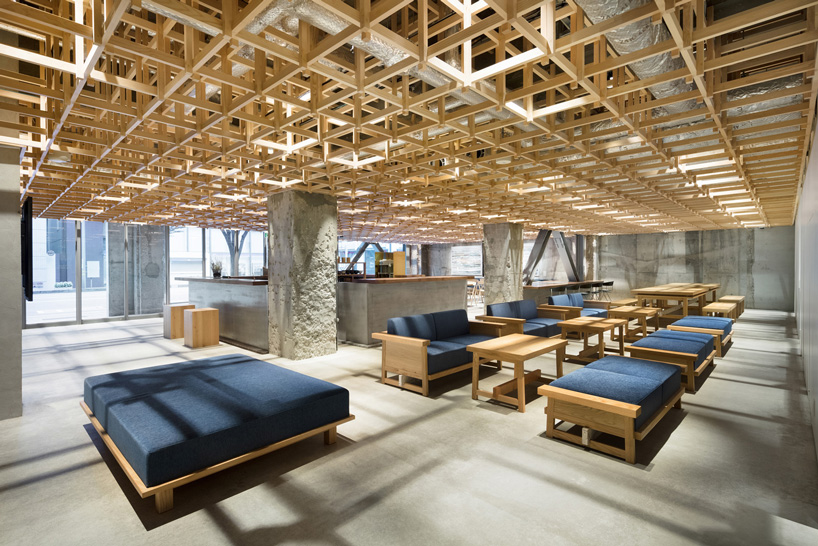
the concept of kumu appears in various places including the timber grid in the lobby, made with traditional japanese joinery, that also serves to support modular wall panels for subdividing the space. the custom-designed furniture joins different textures and materials, while the screens in the guest rooms feature grid-like detailing. designed as a seasonal place that is open to the city in the summer, and provides warmth in the winter, the hotel aims to create a space of encounter where locals and visitors alike mingle, forge relationships, and think about the future of the community.
‘our goal was not to just create another place to sleep, but rather to think earnestly about how strategies for facilitating visitors’ experiences and engagement with the city can be combined with arresting designs,’ concludes yusuke seki.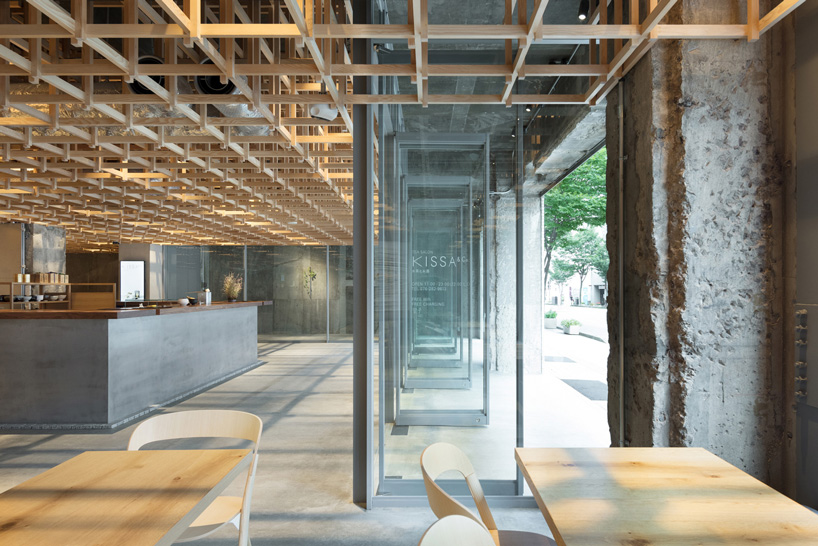
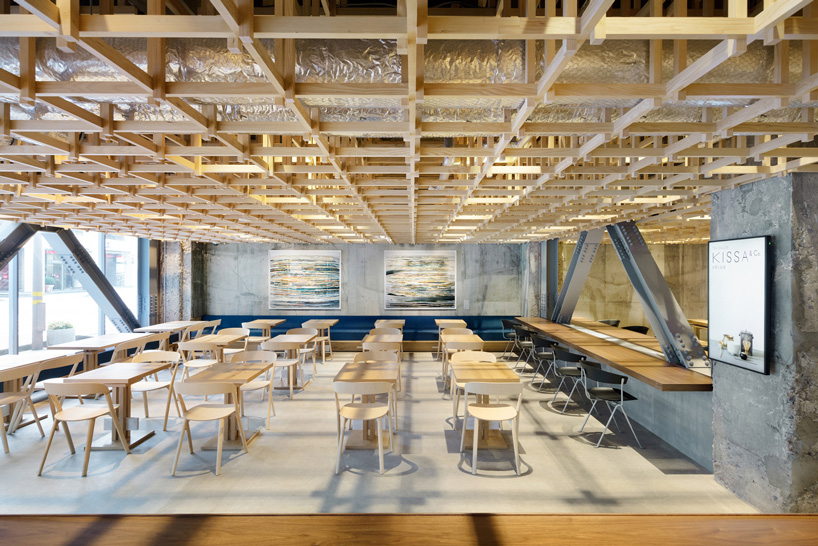
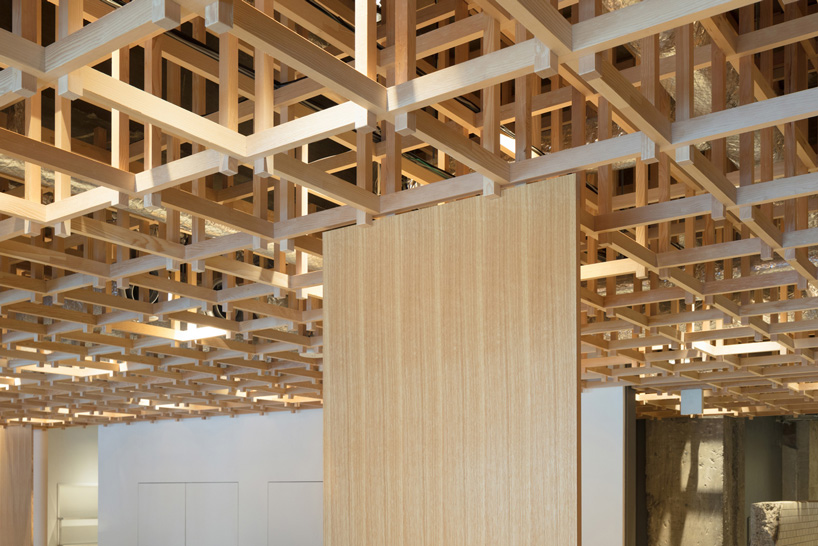
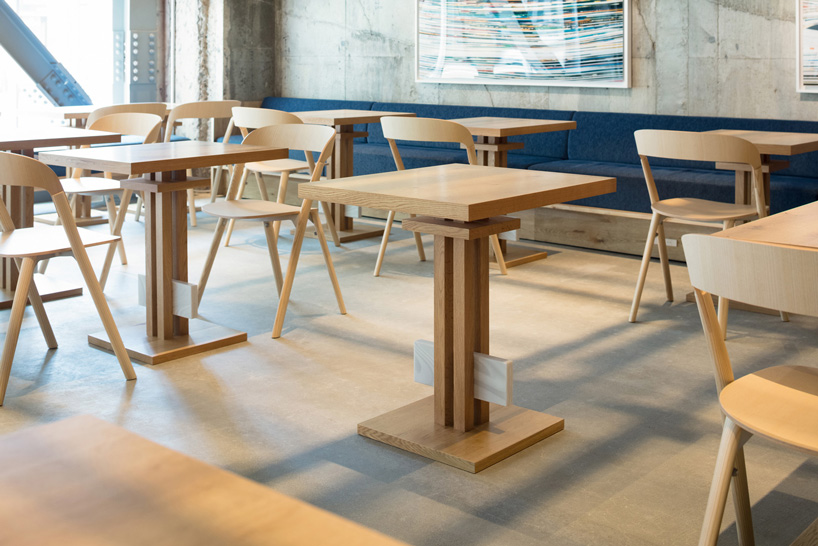
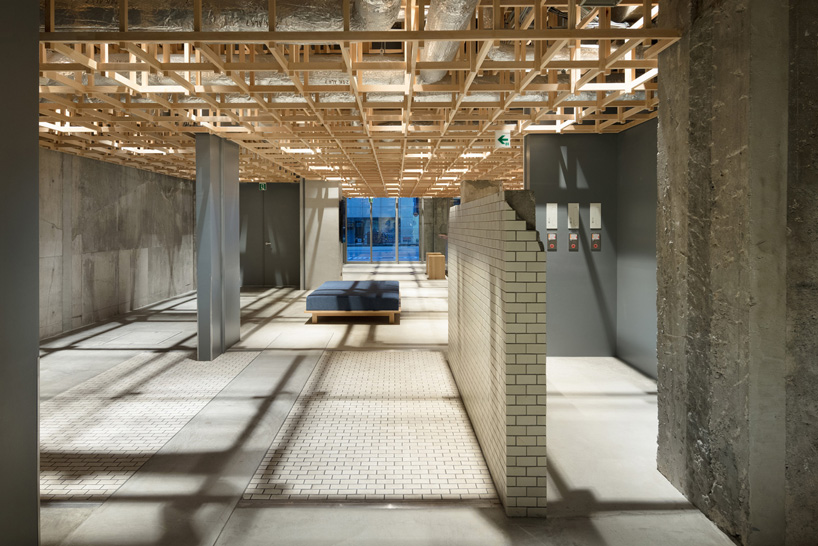
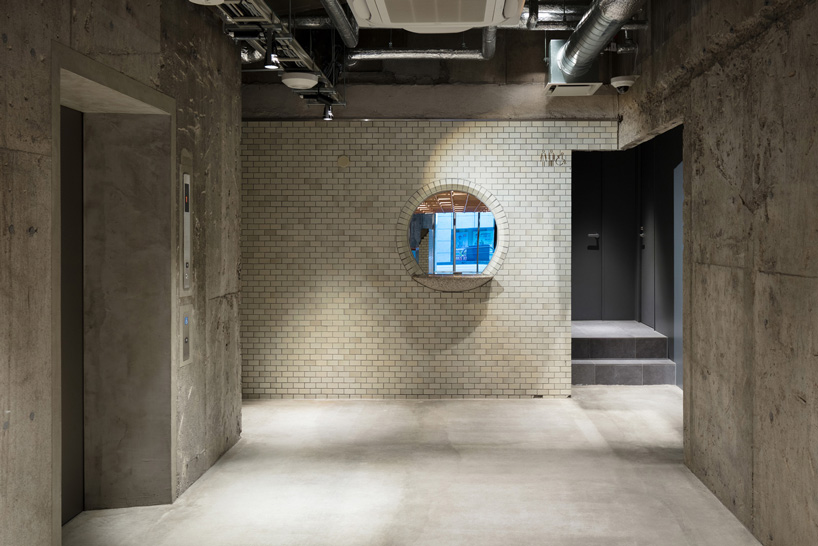
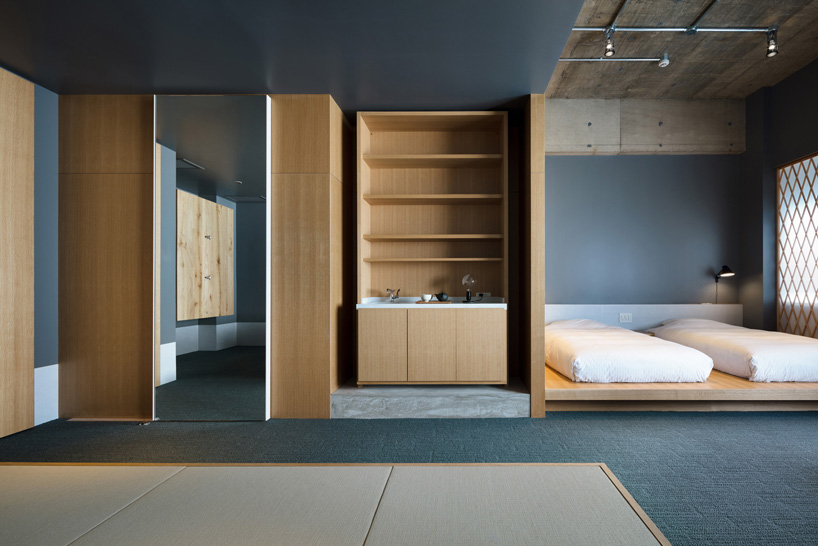
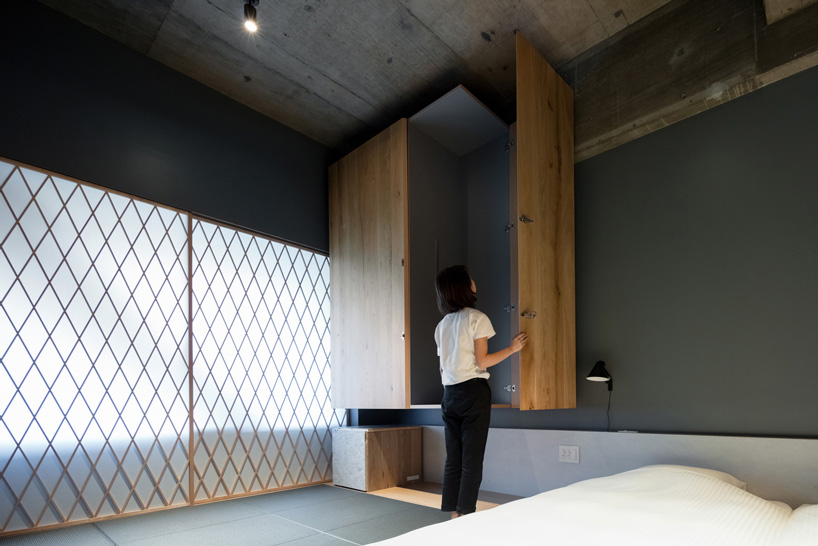
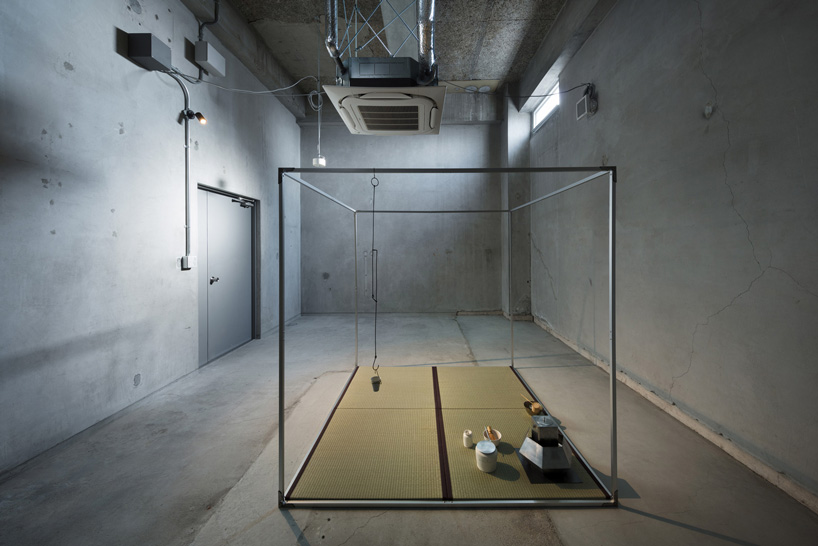
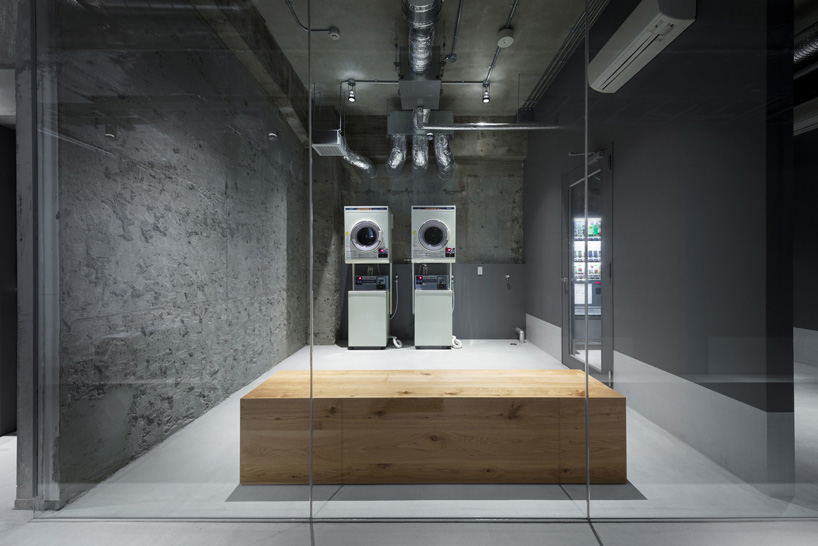
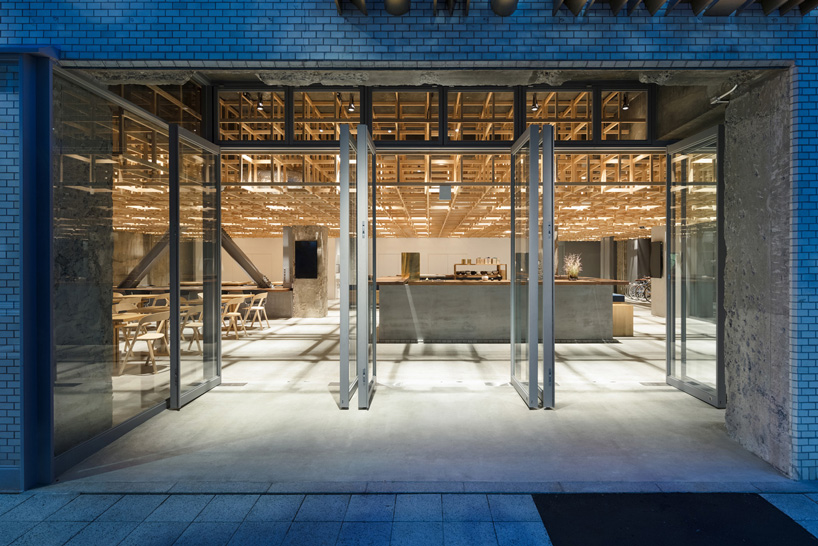
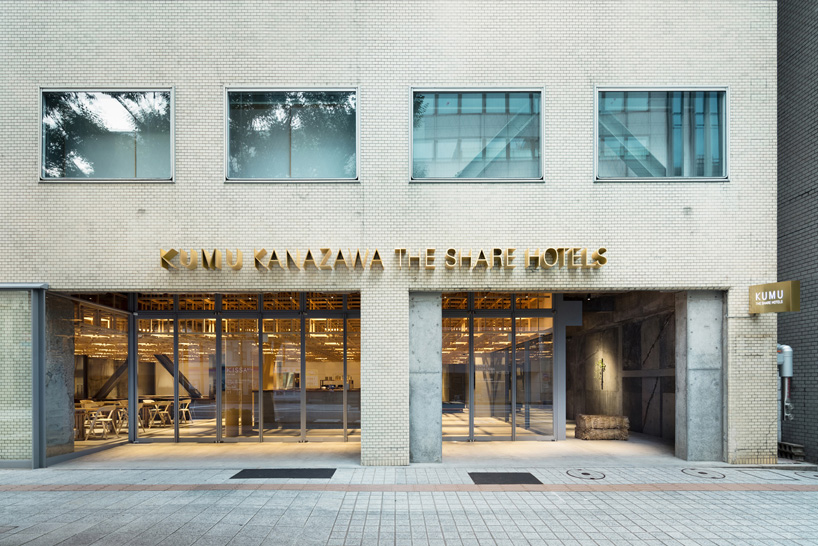
project info:
name: kumu kanazawa
architect: yusuke seki
client: rebita inc.
location: kanazawa, japan
